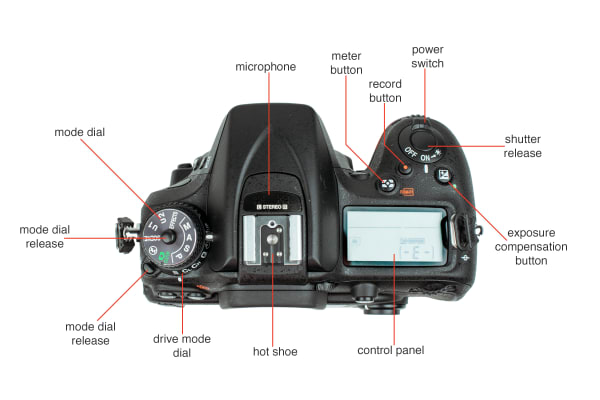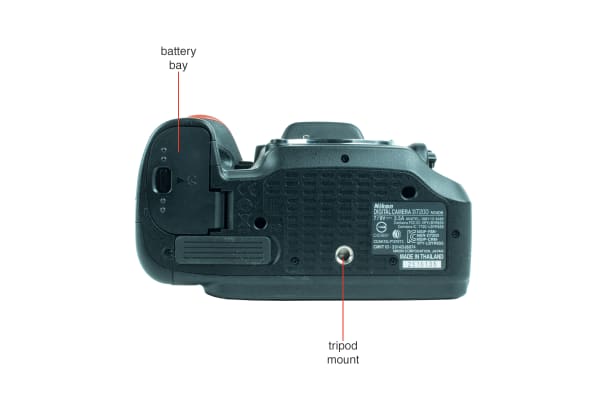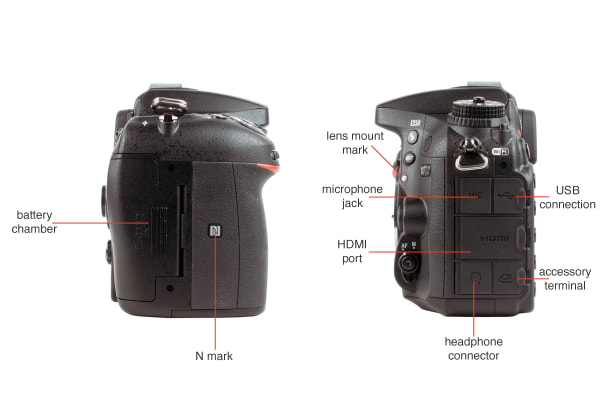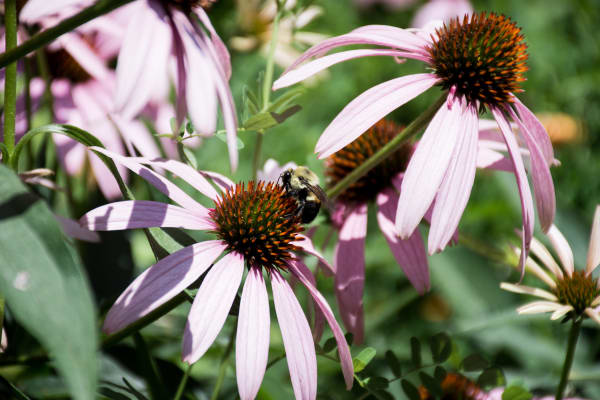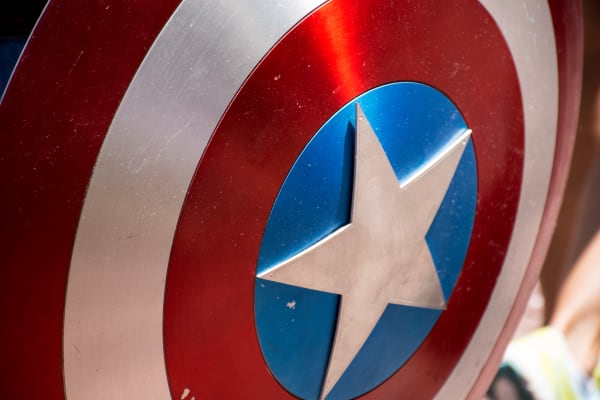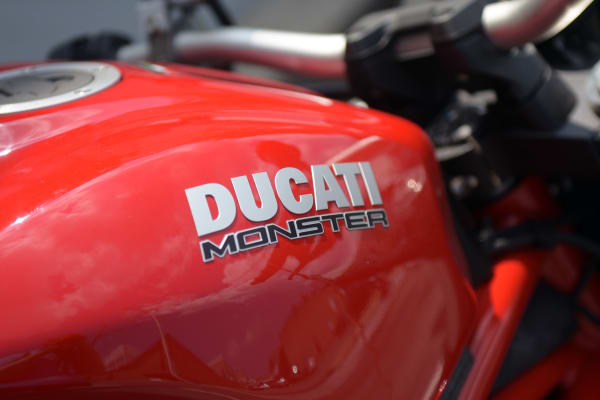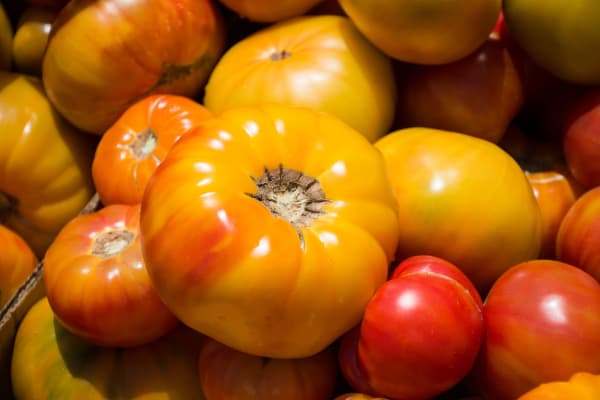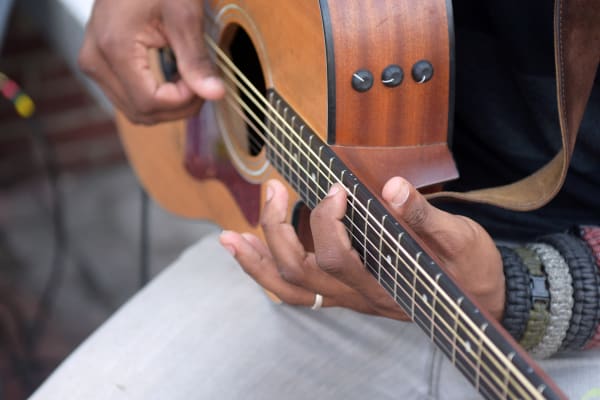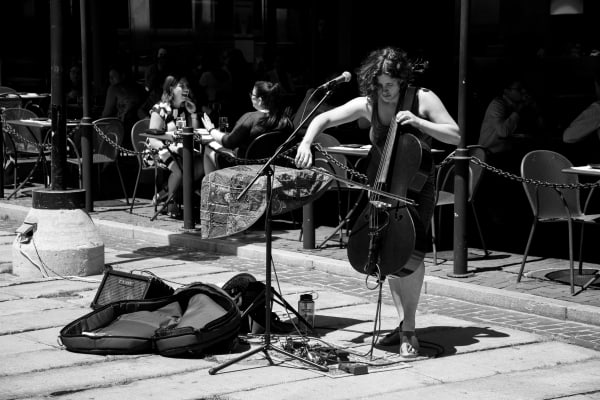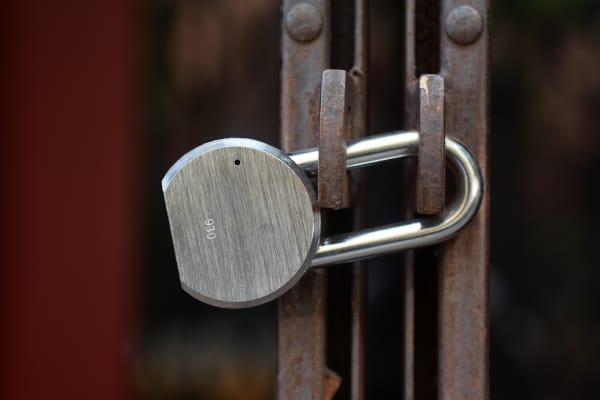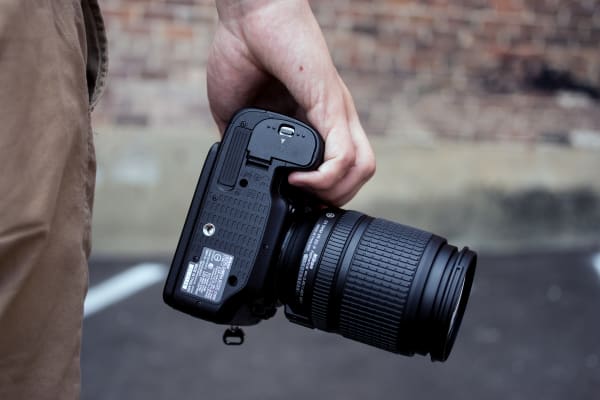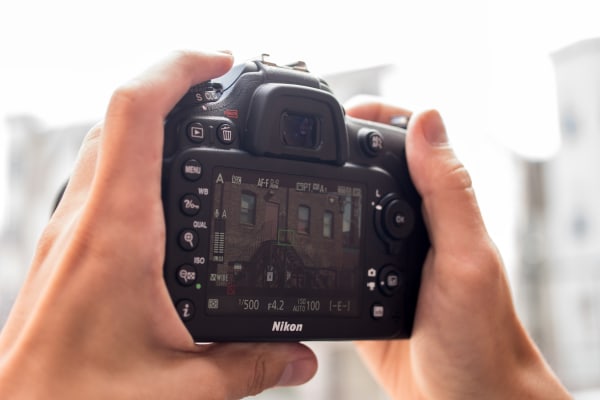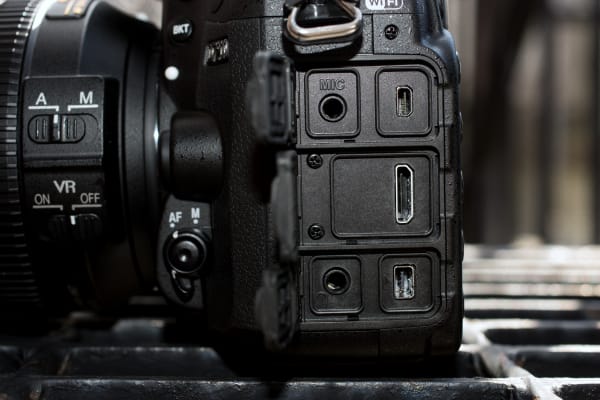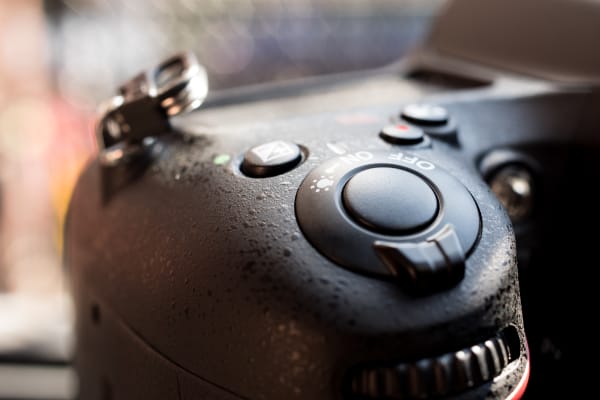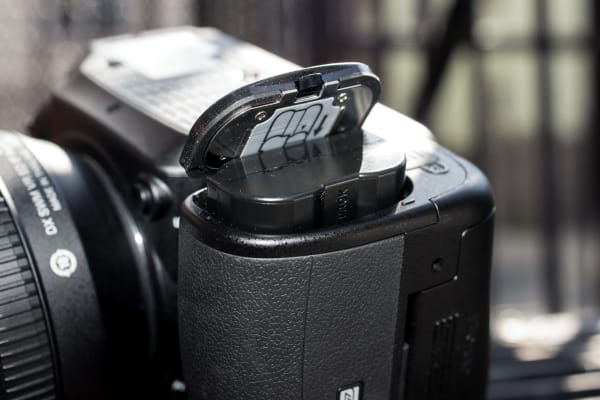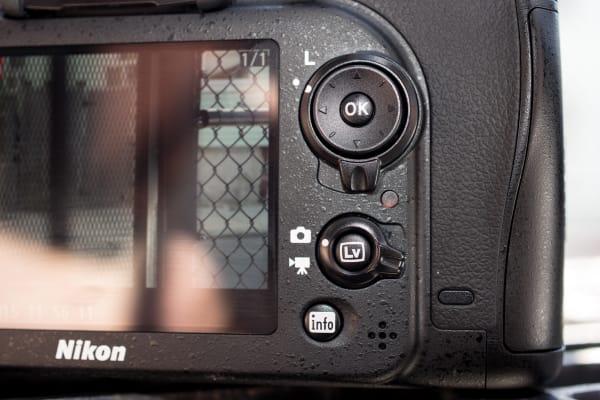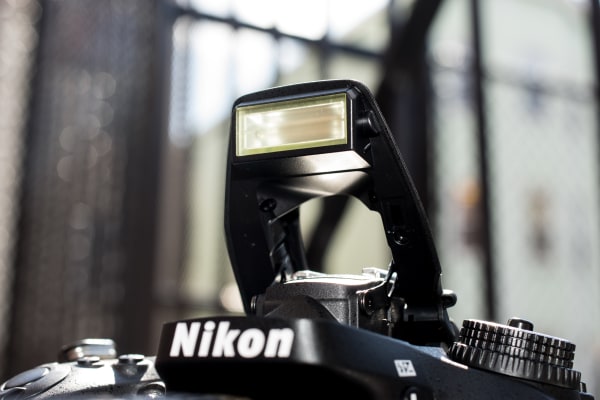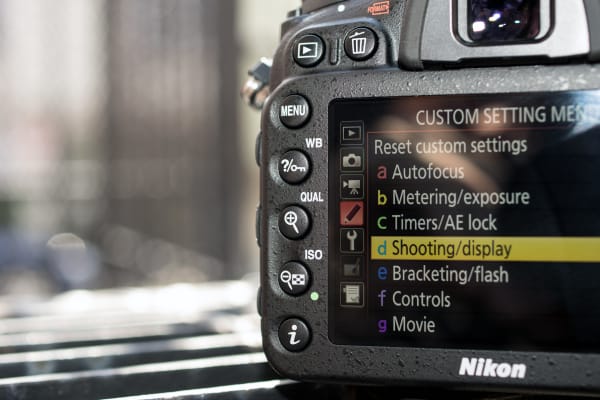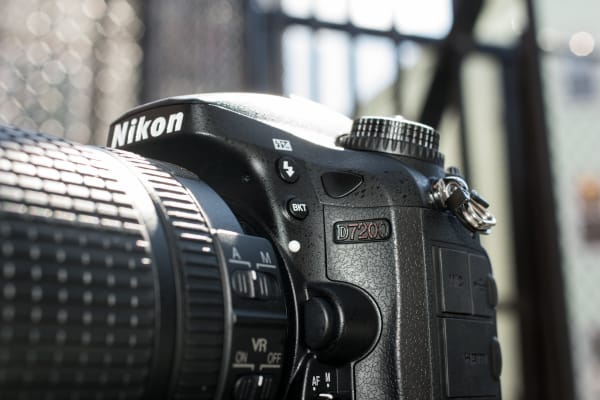Nikon D7200 Digital Camera Review – Reviewed
Mục lục bài viết
Pros
-
Weatherproof
-
Autofocus motor
-
Solid video features
Cons
-
Lacks a full-frame sensor
On the one hand, you’ve got the Nikon D610, a great all-around shooter with a respectable full-frame sensor; on the other, you’ve got the new Nikon D7200 (MSRP $1,199.95), which is slightly cheaper, slightly smaller, slightly faster, but packs the much smaller APS-C sensor. Even with the speed advantage, why would you pay this much for an APS-C DSLR when full-frame is so close in price?
It’s a tough question, but the D7200—like last year’s excellent Canon 7D Mark II—makes a compelling case for buying a high-end APS-C camera. With fast autofocus, solid video, and a smaller sensor—providing 50% more reach than what you get on full-frame—the D7200 is perhaps Nikon’s best DSLR for sports and action photography this side of the D4S. But with a slew of speedy mirrorless cameras looking to get in on the action, is the D7200 worth the money?
Design & Handling
Ctrl + C, Ctrl + V
Design-wise, the D7200 is almost an exact copy of its predecessor, the Nikon D7100. It has the same buttons, dials, layout, grip, height, weight, infrared sensors… everything. Overall it’s not as drastic of an update as last year’s Canon’s 7D Mark II, but Nikon is known for its consistency in design–allowing users to upgrade to new cameras without missing a beat.
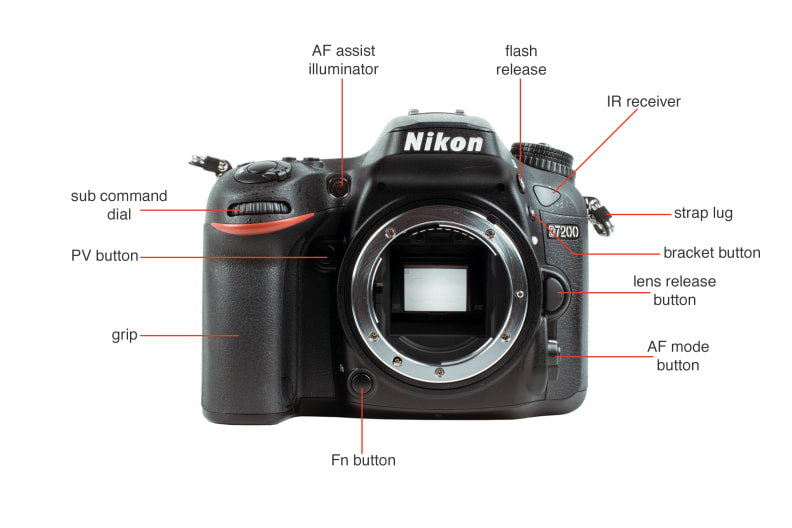 View Gallery ×
View Gallery ×
tour

View Gallery Again

-
Front view of the Nikon D7200.
-
Rear view of the Nikon D7200.
-
Top view of the Nikon D7200.
-
Bottom view of the Nikon D7200.
-
Side view of the Nikon D7200.
As someone that tends to use heavier full-frame DSLRs for shooting, I find the D7200 to be nice and lightweight, but if you’re used to smaller cameras you may find it a bit on the hefty side. Luckily, the grip on the D7200 is deep, offsetting the weight nicely when shooting over long periods of time. In addition to the faux leather grip, the entire camera is also coated with a tactile finish that prevents slipping.
Like most Nikon cameras, the D7200 is all about manual control. This cuts down on trips to the menu, but it takes time to know how to use its many shortcuts. White balance, ISO, image format, focus mode, flash compensation, and bracketing can all be adjusted by holding the corresponding button with your left hand and using the front and rear command dials with your right. Your right hand is also responsible for using the directional pad, focus lock, info button, exposure compensation, metering mode, and live view controls.

Credit: Reviewed.com / Kyle Looney
The mode dial and drive mode dial are stacked on the top left of the camera.
There are two dials on the top left that control shooting mode and drive mode by simply holding the release and spinning the wheel. Additionally there are two programable buttons on the front of the camera (to the right of the lens) that you can set to perform pretty much whatever you want.
In the end, Nikon seems to have nailed down its control scheme and that’s why we don’t see a lot of changes from camera to camera. While Nikon might not have the most intuitive camera for beginners, after you take a little time to learn the ropes, you’ll be able to pick up any Nikon and start capturing images right away.
Performance
As good as APS-C gets.
The D7100 and the D7200 are identical in most ways, and that goes for performance as well. That said, the D7200 has received a new weapon: the Expeed 4 processor. The Expeed 4 is the same class of processor that powers the pro-grade Nikon D4S. To be clear, the Expeed 4 processor in the D7200 has been made specifically for the new camera and while it isn’t the one from the D4S, it’s still a big upgrade.
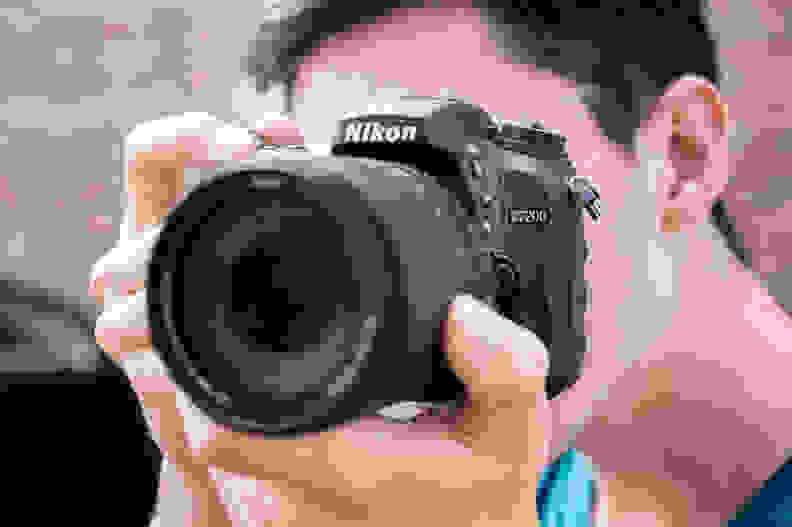
Credit: Reviewed.com / Kyle Looney
Since everything else is so similar, this new processor is responsible for most of the performance gains in the D7200. The new processor influences everything from sensitivity to power consumption. So while the D7100 had a base ISO range of just 100–6400 (expandable to ISO 25,600), the D7200 now has a range of 100–25,600 (expandable to ISO 102,400). But there’s a catch—everything above ISO 25,600 can only be used to take black-and-white photos.
The D7200 has the same six frames per second (fps) shooting rate as the D7100, but it benefits from a much larger frame buffer. So while the D7100 could only squeeze off an average of six RAW (Lossless 14-bit) shots before choking, the new D7200 is capable of at least 18. When capturing just JPEGs we saw as many as 65 images before the buffering affected shooting speeds. You can also shoot for longer on a single charge, with the CIPA rating jumping to 1,100 from 950 with the same battery.
In our other performance tests, the D7200 performed as well as expected. Color scores were mostly the same as the D7100, with “Portrait” mode being the most accurate. “Landscape” and “Flat” were fairly accurate as well, but were over–and under–saturated respectively.
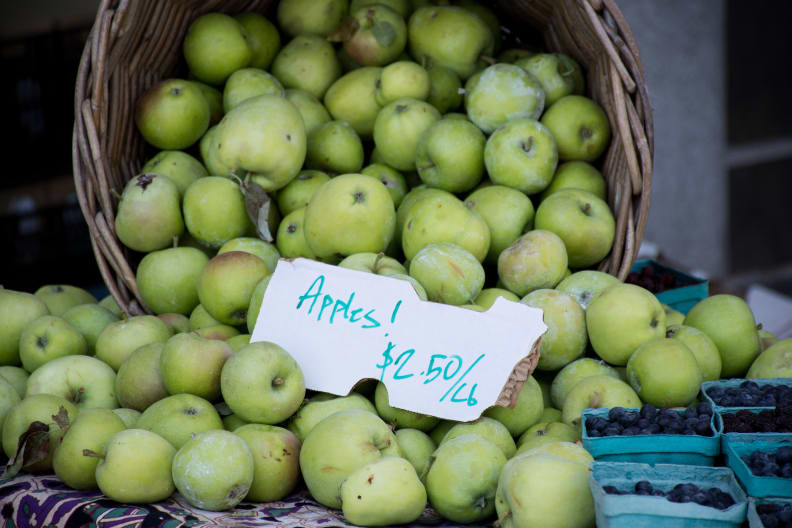 View Gallery ×
View Gallery ×
Samples

View Gallery Again

-
EXIF: 140mm, ISO 250, 1/640, f/5.6 Credit: Reviewed.com / Kyle Looney
-
EXIF: 31mm, ISO 250, 1/400, f/2.8 Credit: Reviewed.com / Kyle Looney
-
EXIF: 140mm, ISO 250, 1/1250, f/5.6 Credit: Reviewed.com / Kyle Looney
-
EXIF: 140mm, ISO 250, 1/400, f/5.6 Credit: Reviewed.com / Kyle Looney
-
EXIF: 35mm, ISO 320, 1/200, f/2.8 Credit: Reviewed.com / Kyle Looney
-
EXIF: 70mm, ISO 100, 1/1250, f/2.8 Credit: Reviewed.com / Kyle Looney
-
EXIF: 140mm, ISO 250, 1/250, f/5.6 Credit: Reviewed.com / Kyle Looney
-
EXIF: 75mm, ISO 250, 1/5000, f/5 Credit: Reviewed.com / Kyle Looney
-
EXIF: 45mm, ISO 320, 1/400, f/2.8 Credit: Reviewed.com / Kyle Looney
-
EXIF: 32mm, ISO 250, 1/640, f/4 Credit: Reviewed.com / Kyle Looney
-
EXIF: 70mm, ISO 320, 1/500, f/2.8 Credit: Reviewed.com / Kyle Looney
-
EXIF: 140mm, ISO 250, 1/320, f/5.6 Credit: Reviewed.com / Kyle Looney
-
EXIF: 60mm, ISO 250, 1/1000, f/5 Credit: Reviewed.com / Kyle Looney
-
EXIF: 18mm, ISO 250, 1/1000, f/3.5 Credit: Reviewed.com / Kyle Looney
-
EXIF: 70mm, ISO 250, 1/320, f/2.8 Credit: Reviewed.com / Kyle Looney
-
EXIF: 70mm, ISO 250, 1/500, f/2.8 Credit: Reviewed.com / Kyle Looney
Historically, white balance has been something that Nikon has struggled with, but the D7200 has made some strides to change that. While the auto white balance for incandescent and fluorescent light was still pretty poor, with daylight the auto white balance was very accurate. And when setting custom white balance the D7200 always came within 100 kelvins of perfect. Even so, shooting RAW is always your best bet for accurate white balance, since you can simply adjust it during post production.
Even with the new extended ISO range, there isn’t much difference in the D7200’s high ISO performance. For quality images you can go up to ISO 3200 before images become too noisy for our liking. That’s not to say you can’t shoot above that, but proceed with caution. And while Nikon’s decision to limit the expanded ISO speeds to black-and-white only isn’t great, the results are more usable this way.
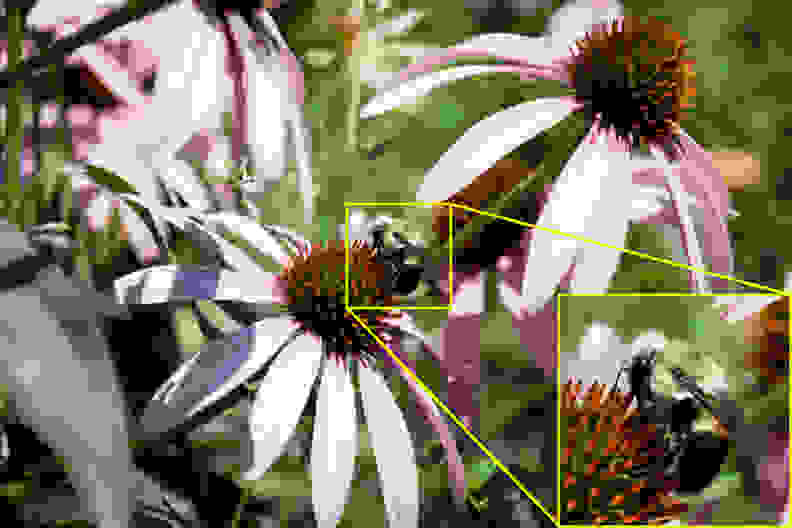
Credit: Reviewed.com / Kyle Looney
As you can see above, the D7200 is capable of preserving details as small as pollen on a bee.
For video, you once again can shoot 1080 at 60 fps, but it’s now progressive instead of interlaced–another advancement you can thank the new processor for. The new ISO range was also extended to video, which allows you to shoot useable low-light video with just two lux of light. All the video we shot with camera was smooth and sharp, but it’s lackluster when compared to some of the mirrorless cameras that offer 4K—often for the same price or less.
Features
The D7200 gets connected with WiFi and NFC
The Nikon D7200 retains many of the same features of the D7100, but there are a few new ones that really set it apart. The biggest feature that was added to the D7200 is built-in WiFi with NFC. This allows users to use Nikon’s Snapbridge app to pair your smart device with the camera wirelessly. Android users can simply use the NFC contact point for an easy connection, while iOS users still have to pair them manually.

Credit: Reviewed.com / Kyle Looney
The Nikon Snapbridge app is just short of useless–only allowing touch-to-focus and shutter release.
Once connected, users can use the app as a remote control for the D7200–allowing more range and creative freedom. Unfortunately, there are a few limitations. Pairing it to your phone is simple enough, but once you enter live view in the app, you have no control over the settings in the app or on the camera. In order to change any settings, you must get out of live view, change settings, and relaunch it. On other WiFi cameras this is simply a non-issue, so it’s a puzzler that Nikon can’t sort it out.
Perhaps the best new feature is smooth exposure variations for in-camera timelapse movies. This feature makes creating day-to-night time lapses much smoother and gets rid of the “flickering” effect that can come from exposures jumping up and down over the course of capturing. This option is available whether you decide to have the camera automatically produce a 1080p time lapse on its own or you’re simply shooting at an interval with plans to stitch it together on a PC later. Unfortunately, you still can’t capture both full resolution stills and video at the same time.
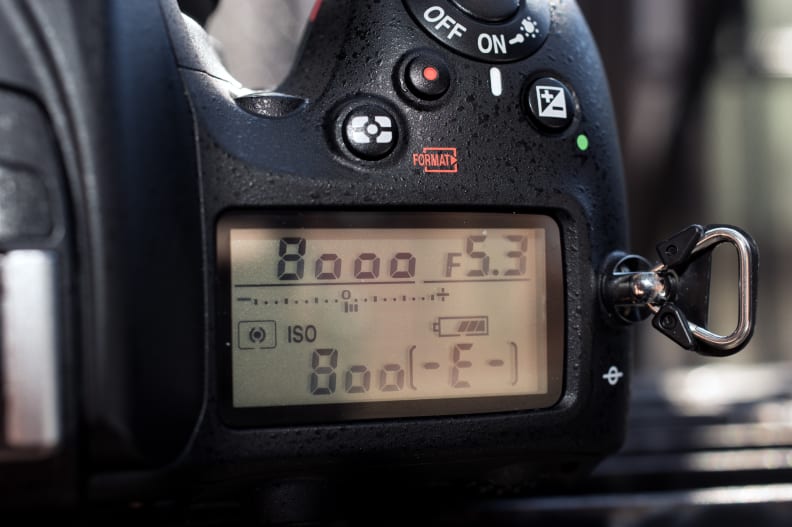 View Gallery ×
View Gallery ×
Design

View Gallery Again

-
The top monitor displays all your important settings. Credit: Reviewed.com / Kyle Looney
-
The deep grip on the D7200 makes handling over long periods a pleasure. Credit: Reviewed.com / Kyle Looney
-
The D7200 has a live view for both video and still images. Credit: Reviewed.com / Kyle Looney
-
HDMI, microphone, headphones, USB, and an access terminal are all present for adding accessories. Credit: Reviewed.com / Kyle Looney
-
Credit: Reviewed.com / Kyle Looney
-
The mode dial and drive mode dial are stacked on the top left of the camera. Credit: Reviewed.com / Kyle Looney
-
The battery is the same one used in the D7100. Credit: Reviewed.com / Kyle Looney
-
The right of the camera has your directional pad and live view selectors. Credit: Reviewed.com / Kyle Looney
-
The built-in flash on the D7200 can light subjects and trigger external speedlights. Credit: Reviewed.com / Kyle Looney
-
The left controls have quick functions for ISO, quality, and white balance. Credit: Reviewed.com / Kyle Looney
-
Credit: Reviewed.com / Kyle Looney
-
While the rear monitor isn’t touchscreen or articulating, it does get the job done. Credit: Reviewed.com / Kyle Looney
-
Credit: Reviewed.com / Kyle Looney
When capturing traditional video, the D7200 has the ability to produce very good 1080p footage at 24, 25 or 30fps and at 50/60fps with a 1.3x focal length crop. It’s also equipped with 3.5mm headphone and microphone jacks, which allow users to get more serious and improve the audio of their footage with external microphones. You can also use the “Flat” color mode, which essentially behaves like GoPro’s ProTune and allows for better color control in post processing.
While these features are clearly aimed at getting filmmakers’ attention, we’d have loved to have seen the fully articulating rear monitor of the D5500, or even the tilt-screen from the D750. Most video-centric cameras on the market have them, and they make a huge difference while filming.
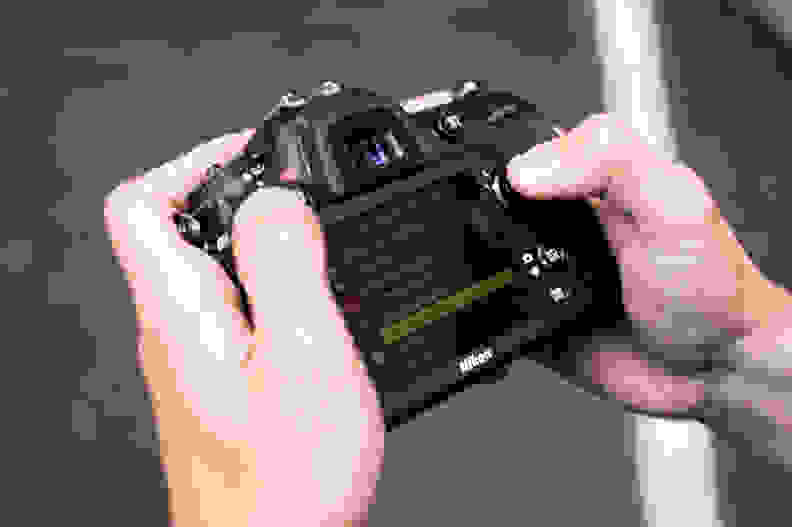
Credit: Reviewed.com / Kyle Looney
While the rear monitor isn’t touchscreen or articulating, it does get the job done.
For both still and video shooters, the D7200’s chief draw over lower-end APS-C cameras is its durability and built-in focus motor. It’s fully dust- and weather-sealed, letting you shoot in much rougher conditions than you can with the lower-end Nikon D5500. And the focus motor also means you can use autofocus with any of Nikon’s “AF” lenses, even those that lack the AF-S designation.
Finally, the D7200 includes features typical of a modern Nikon DSLR. It has Nikon’s Active D-Lighting function, multi-shot HDR, 16 scene modes, and seven Picture Controls. The scene modes range from “Landscape” to “Pet Portrait” to “Food”, allowing users to capture images without needing to know how to manually adjust settings. Picture Controls are now available to use in both still and video modes.
Conclusion
The D7200 is the best Nikon short of going full-frame.
With Nikon’s full-frame cameras now cheaper than ever, the very concept of a flagship APS-C camera is standing on shaky ground. In its current position, The D7200 is probably too expensive for most beginners and many ambitious photographers will be tempted to jump right to full-frame.
It’s a tough problem, but one that Nikon’s chief rival Canon also just tackled with the 7D Mark II. Canon’s solution was to make the 7D Mark II almost too attractive to pass up for anyone who wants a pro-quality DSLR for sports/action, but can’t afford something like the Nikon D4S or Canon EOS-1D X. The 7D Mark II is designed to be a pro-quality body—with pro-grade autofocus, weather sealing, and controls—that will hold up to rigorous use more than even the cheap full-frames on the market, a tactic that Nikon is replicating with the D7200.
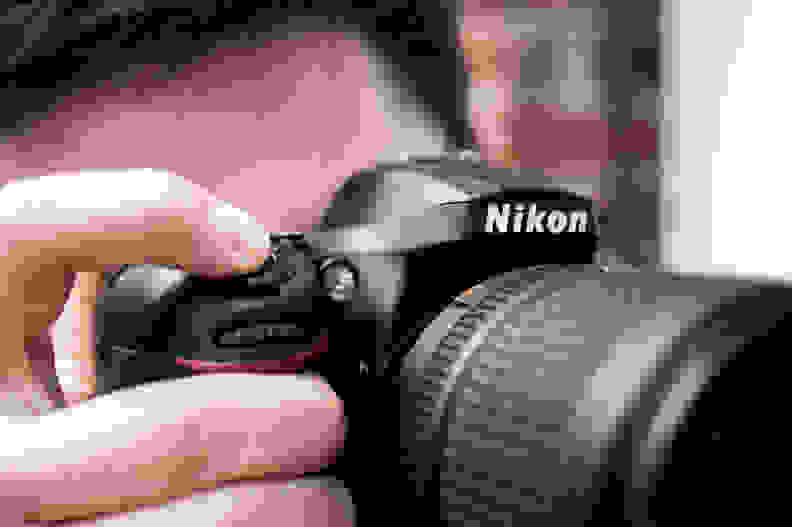
Credit: Reviewed.com / Kyle Looney
So while the D5500 offers similar image quality at a lower price and the D610 offers a full-frame sensor with higher performance, the D7200 has a few distinct advantages over these cameras that will benefit sports and action shooters.
Because the D7200 has a smaller sensor than the D610, all of Nikon’s FX lenses receive a 50% bump in effective reach, letting you get closer to the action. The D5500 also provides this, but the D7200 gives you weather sealing and that in-body focus motor, letting you autofocus with Nikon’s older screw-driven lenses as well as newer AF-S versions. That gives you significantly more AF-compatible lens options, many of which are more durable and much cheaper than AF-S lenses.
If you’re looking for the best APS-C camera that Nikon offers, the D7200 is definitely your camera.
So while it won’t be right for everyone, if you’re looking for the best all-around APS-C camera that Nikon offers, the D7200 is it. It’s expensive, but for sports and action shooters the combination of fast processing, a huge frame buffer, and the ability to leverage Nikon’s history of fantastic glass is well worth the price of admission.
By the Numbers
While APS-C cameras don’t get as much love as they once did, Nikon has kept plugging away to improve its flagship model. Its improved ISO range and buffer speeds for continuous shooting were both welcome changes thanks to its new Expeed 4 processor. White balance, which Nikon consistently struggles with, was also improved with the new model. With one of the highest scores we’ve seen to date from an APS-C camera, there is no question that Nikon has produced a capable camera with the D7200.
Color & White Balance
Color scores mostly unchanged on the D7200, with “Portrait” mode coming in as the most accurate with an ∆C corrected color error average of only 2.19 and a color saturation that was only over by 1%. “Landscape” and “Flat” were fairly accurate as well, just with over and under saturation applied.
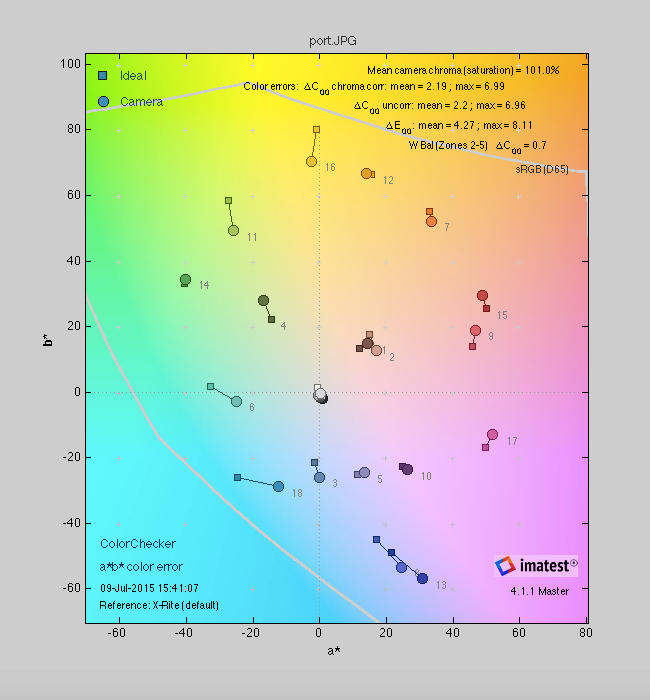
White balance has been something that Nikon has struggled with over the years, but the D7200 has improved quite a bit over the D7100. The auto white balance for incandescent and fluorescent light are still off by anywhere from 1500 to 2500 kelvins respectively, but auto daylight—as well as custom white balance under any lighting condition—always came within 100 kelvins of perfect. Even so, shooting RAW is always your best bet for accurate white balance since you can simply adjust it during post production.
As you can see below, you’re better off using custom options whenever possible.
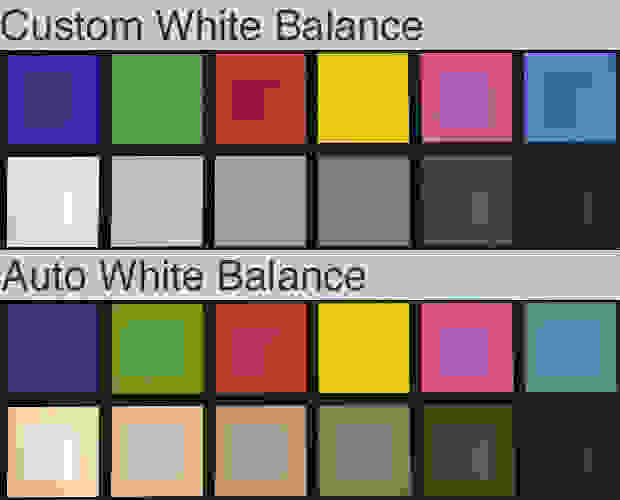
Resolution
Resolution on the D7200 was also improved, but a lot of this is thanks to changes in the built-in sharpening algorithms. On JPEGs, we saw a peak of over 3000 lw/ph and an average of 2200 lw/ph, which means that it averaged a resolution that was 100 lw/ph higher than the D7100 peaked at.
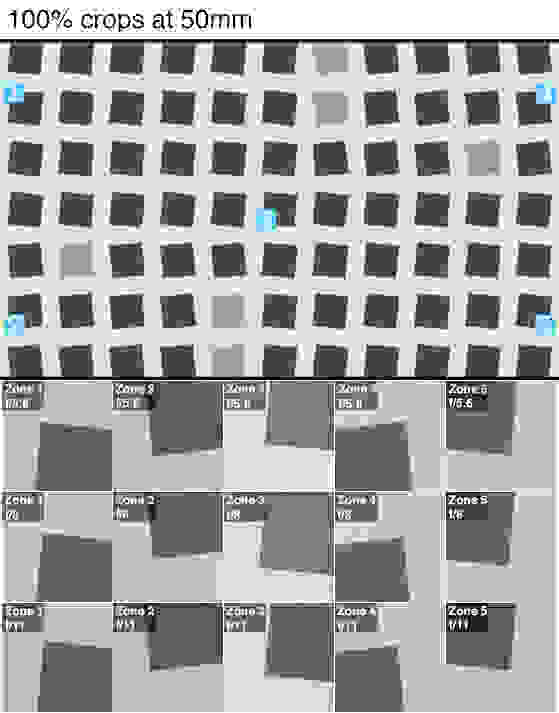
RAW images weren’t as sharp as the JPEG–due to the lack of sharpening enhancement–but they still showed the kind of sharpness that we would expect from Nikon’s flagship APS-C camera. The pixel density, combined with Nikon’s excellent optical quality, yields sharp results under almost any condition.
Noise
While the default ISO range on the D7200 has been increased, now stretching from ISO 100-25,600, the actual noise performance has hardly changed. We were able to get clear images up ISO 1600 without noise reduction active. After ISO 1600, quality starts to drop gradually, but ISO 3200 and 6400 are still not terrible. Past the ISO 12800 mark, images lose most detail and are no longer of desirable quality.
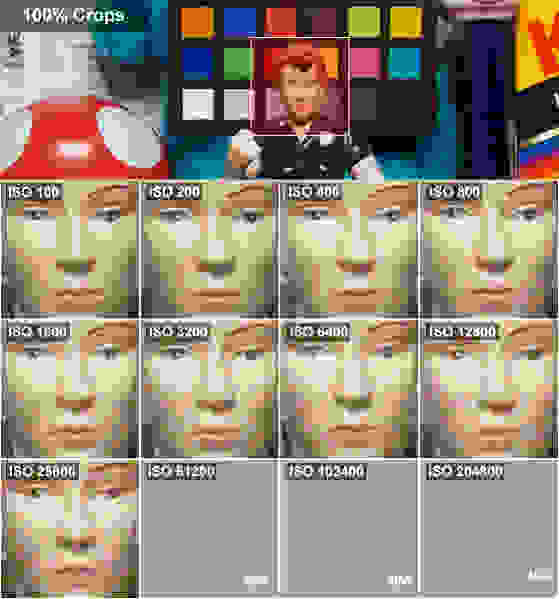
Nikon has included the option to shoot even higher than ISO 25600 (up to ISO 51200-102,400), but in black and white only. This is useful if you’re in an emergency situation where any image is better than no image, but you aren’t going to be getting much detail. On the other hand, the noise can give a certain “filtery” look that some may find appealing.
Continuous Shooting
The new Expeed 4 processor (and much bigger frame buffer) really shined when it came to rattling off bursts of photos. The D7200 maintains the D7100’s 6fps burst speed under normal conditions, but if you apply the 1.3x crop mode you can bump that up to 7fps. The main benefit this time around is the new frame buffer, which more than doubles the amount of images the camera can capture before slowing down. The D7100 could only handle 6 RAW (lossless 14-bit), but the D7200 fired up to 18 before stopping to process.
If you’re shooting JPEGs this becomes a much higher number, as we saw 65 JPEGs before the camera slowed down. We were able to keep shooting at the slower rate for up to 100 shots before our Class 10 card hard to stop entirely.
Dynamic Range
Dynamic range describes the camera’s ability to record a range of different light levels in a single scene, from bright white to dark shadows. To test this we photograph a backlit Xyla-21 from DSC Labs, which presents a maximum of 20 stops in a single scene. We measure from peak white to the point at which the exposure drops below a fixed value or the signal to noise ratio drops below 10:1.
With the D7200, we observed around 8.46 stops of dynamic range when shooting RAW stills at base ISO (100). As is typical, this dropped steadily as we climbed through the ISO range, until we reached zero “high quality” stops at ISO 6400. If you look at the more typical definition of dynamic range (where SNR drops below 1:1) then the D7200 can manage just over 13 stops at base ISO, putting it amongst the best APS-C sensors on the market.
Meet the tester

Jackson Ruckar
Photographer / Producer
@JacksonRuckar
As a photojournalist, Jackson has had stints working with bands, the military, and professional baseball teams before landing with Reviewed.com’s camera team. Outside of Reviewed.com, he can be found looking for the next game to relieve his “Gamer ADD” or growing his beard.
See all of Jackson Ruckar’s reviews
Checking our work.
Our team is here for one purpose: to help you buy the best stuff and love what you own. Our writers, editors, and lab technicians obsess over the products we cover to make sure you’re confident and satisfied. Have a different opinion about something we recommend? Email us and we’ll compare notes.
Shoot us an email



